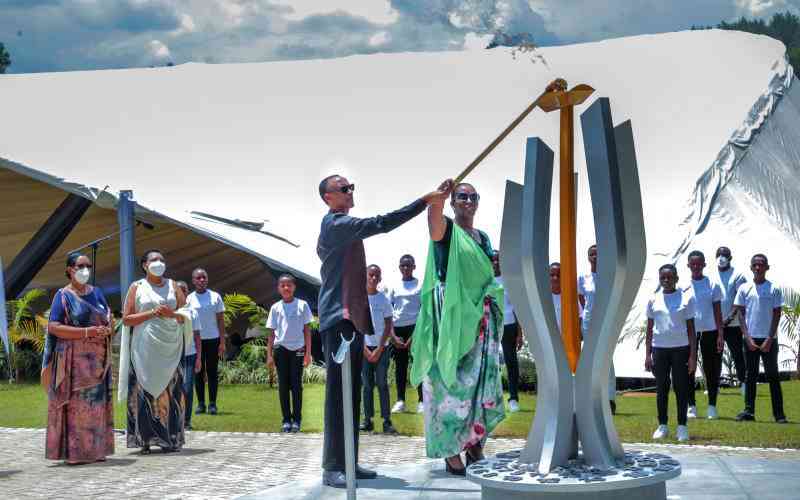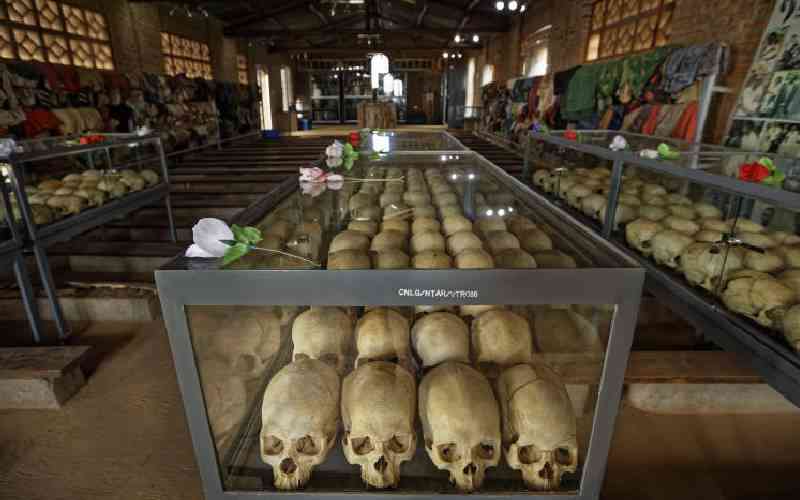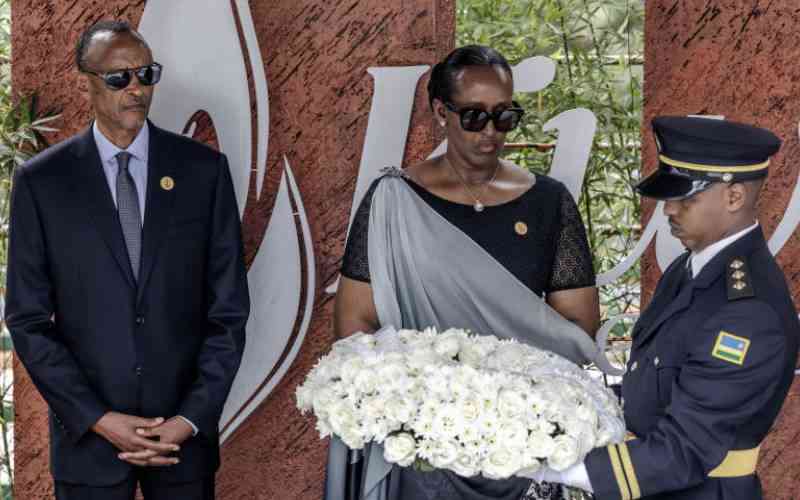Police in Paris have arrested Rwanda’s most wanted man, Felicien Kabuga, an alleged architect of the genocide that killed about 800,000 people more than 25 years ago.
Here are some details about the genocide:
WAR:
**In 1990, rebels of the Tutsi-dominated Rwanda Patriotic Front (RPF) invaded northern Rwanda from neighbouring Uganda. The RPF’s success prompted President Juvenal Habyarimana, a Hutu, to speed up political reforms.
**In August 1993, Rwanda and the RPF signed a deal to end years of civil war, allowing for power-sharing and the return of refugees. Habyarimana was slow in implementing the agreement, and a transitional government failed to take off.
THE SPARK:
**On April 6, 1994, Habyarimana and neighbouring Burundi’s president, Cyprien Ntaryamira - both Hutus - were killed in a rocket attack on their plane over the capital Kigali.
**The next day, presidential guards killed moderate Hutu Prime Minister Agathe Uwilingiyimana who had tried to calm tensions.
GENOCIDE:
**Habyarimana’s death triggered 100 days of violence in the tiny country, perpetrated mainly by Hutus against Tutsis and moderate Hutus. About 800,000 people were killed, many butchered with machetes by militia known as Interahamwe.
**The RPF advanced and seized control of Rwanda after driving the 40,000-strong Hutu army and more than 2 million civilian Hutus into exile in Burundi, Tanzania and the former Zaire, now Democratic Republic of Congo.
**In July 1994 a new government was sworn in with Pasteur Bizimungu, a Hutu, named president and RPF commander Paul Kagame as vice president. Kagame was elected president in April 2000 and remains in the office.
TRIALS:
**In December 1996, Rwanda’s first genocide trial opened at the International Criminal Tribunal for Rwanda (ICTR) in Arusha, northern Tanzania.
**It ultimately heard from more than 3,000 witnesses, indicted 96 people, and sentenced 61 of them including ex-prime minister Jean Kambanda and former Colonel Theoneste Bagosora, who was accused of being in charge of the troops and Interahamwe which carried out the massacres. Both were given life sentences.
Stay informed. Subscribe to our newsletter
**Most people convicted in connection with the genocide were tried in community-based “gacaca” courts in Rwanda.
REGIONAL FALLOUT
**Rwandan troops invaded Congo twice during the 1990s to try to hunt down perpetrators of the genocide. Conflict there is estimated to have killed several million people, mostly through hunger and disease. Luis Moreno-Ocampo, chief prosecutor of the International Criminal Court (ICC) until 2012, described the 1998-2003 war in Congo as “the greatest armed conflict after the Second World War.”
 The Standard Group Plc is a
multi-media organization with investments in media platforms spanning newspaper
print operations, television, radio broadcasting, digital and online services. The
Standard Group is recognized as a leading multi-media house in Kenya with a key
influence in matters of national and international interest.
The Standard Group Plc is a
multi-media organization with investments in media platforms spanning newspaper
print operations, television, radio broadcasting, digital and online services. The
Standard Group is recognized as a leading multi-media house in Kenya with a key
influence in matters of national and international interest.
 The Standard Group Plc is a
multi-media organization with investments in media platforms spanning newspaper
print operations, television, radio broadcasting, digital and online services. The
Standard Group is recognized as a leading multi-media house in Kenya with a key
influence in matters of national and international interest.
The Standard Group Plc is a
multi-media organization with investments in media platforms spanning newspaper
print operations, television, radio broadcasting, digital and online services. The
Standard Group is recognized as a leading multi-media house in Kenya with a key
influence in matters of national and international interest.







